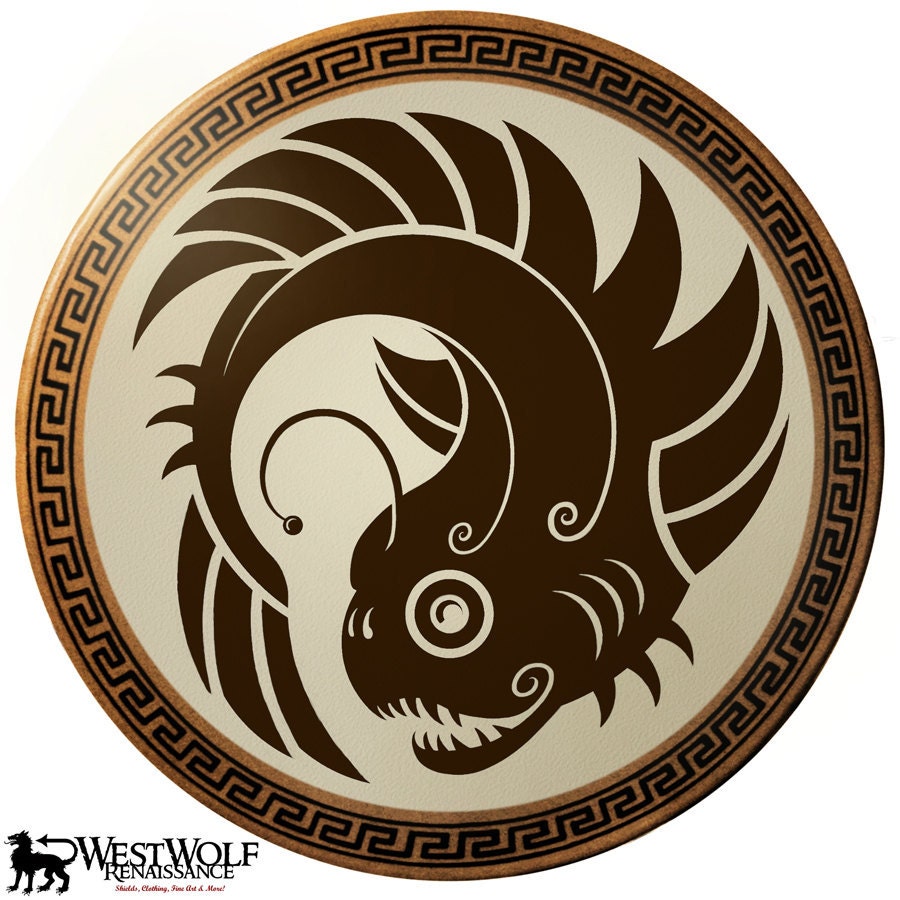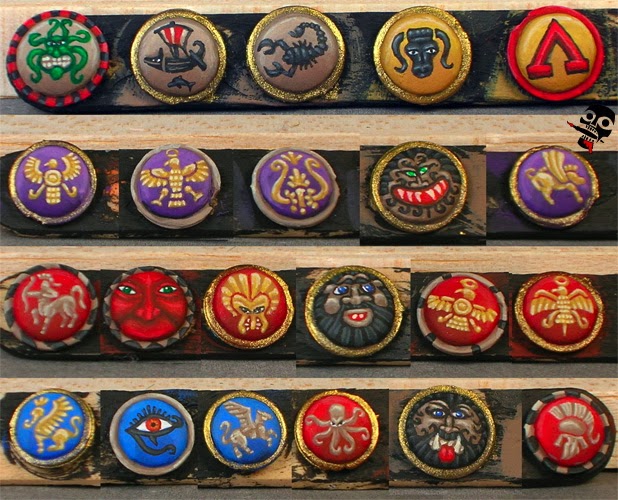
Allowing a hoplite to utilize the extra portion of his fellow combatant’s shield would also imply that the hoplite phalanx would have a tendency to move right when advancing in combat (see “Formations and Tactics”). Thucydides mentions the right step motion in his account of the Battle of Manitea in 418 B.C. Thucydides states that all Greek armies are alike in there tendency to step right when engaging in battle, as hoplites would out of fear move to cover their unprotected sides with the left half of the hoplite next to them (see Thucydides, History of the Peloponnesian War, 7.71). The fact that Thucydides mentions the rightward motion of the phalanx due to the hoplon cannot be ignored.


An action so significant that a Greek general would mention it in his writings suggests a uniqueness to the motion and the phalanx it self, and contributed to the phalanx emerging as a battle formation unlike anything the world had ever seen before.Ancient Greek pottery portraying Achilles and Penthesileia by Exekias, c. Credit: Marie-Lan Nguyen/Public domainĪs far back as the eighth century BC, the ancient Greeks had invented a large, round shield called an aspis that would serve as an essential part of warfare through the Hellenistic era. The designs, or blazons, on these shields would go on to strike fear in the hearts of their enemies. Often called an “Argive” shield, it not only protected its owner in battle but showed his allegiance to a particular city-state or leader. And the figures painted on its exterior were also often meant to show the courage of its bearer and to strike fear into the enemy.Īrguably the most famous such decoration is that of the Spartans, also called the Lacedaemons, with a capital lambda (Λ). Beginning in the late 5th century BC, Athenian hoplites, or soldiers, commonly used an owl, the emblem of the goddess Athena, to signify their identity while the shields of Theban hoplites could be decorated with a sphinx, or the club of Heracles. The Persian soldiers, called Sparabara, held only wicker shields in front of them in battle, which were far inferior to the heavier wooden shield of the Greeks.Īlthough even larger than the Argive shields of the Greeks, the wicker shield naturally had no such protective capacity despite the two meter-long spears that the Persians used in battle. This small bronze relief panel dating back to 575 BC was once sewn onto the leather strap inside a shield. Perhaps most amazing of all is that it bears an inscription, one of a man called Aristodms of Argos. Measuring 16.2 x 8 x 1.5 cm (6 3/8 × 3 1/8 × 9/16 in.), this piece is one one of the earliest known signatures of a Greek artist. Public DomainĪt the top edge of the lower square, the signature of the bronzeworker is written in retrograde, from right to left: “Aristodamos the Argive made (this).” A bronze badge, part of a shield strap, signed by the creator Aristodamos the Argive. The intricately-made strap depicts two myths that were favored in that region of Greece. The upper panel represents the recovery of Helen of Troy by her husband Menelaos, king of Argos. Athena, the protectress of the Greeks, stands looking to the right. The lower scene depicts the Centaur Nessos abducting Deianeira, the wife of the hero Herakles.

The names of the figures are inscribed beside them.

The ancient Greeks sometimes considered shields to be valuable religious dedications, and shield straps are often found in the excavations of sanctuaries. Many such examples come from the Sanctuary of Zeus at Olympia, where worshippers left elaborate bronze shields as gifts to the gods. The city of Argos in southern Greece was the major production site of this art form. Because the maker of this shield strap, Aristodamos, names himself as an inhabitant of Argos, this work can be taken as important evidence for the style of Argive art in the early Archaic period.


 0 kommentar(er)
0 kommentar(er)
